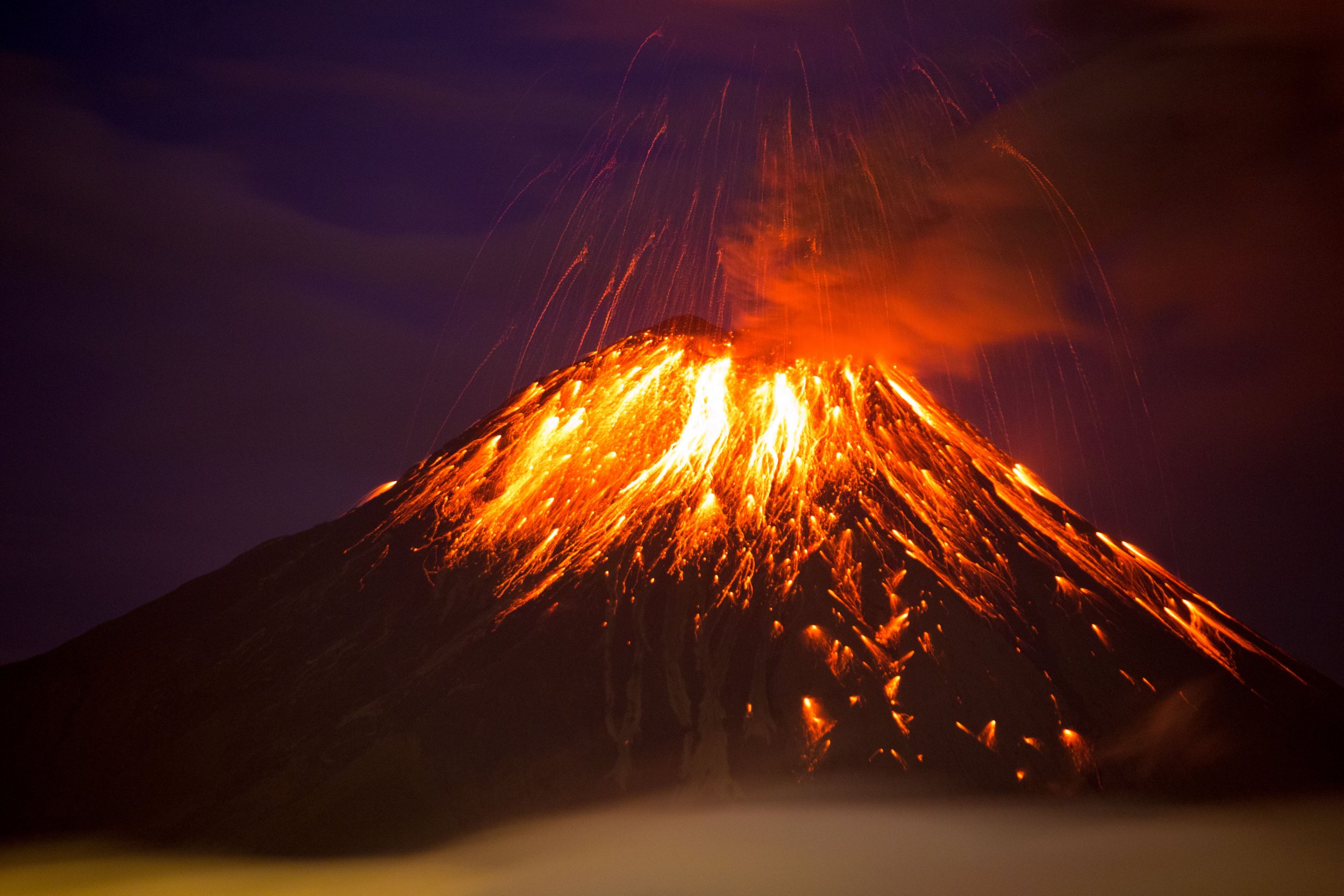Power Beneath: A Journey Across the World's Active Volcanoes
Active volcanoes, with their majestic yet formidable presence, captivate our imagination and remind us of the dynamic forces shaping our planet. From the steaming vents of Iceland to the fiery eruptions in the Pacific Ring of Fire, this article takes you on a global tour of some of the most active and awe-inspiring volcanoes.
The Pacific Ring of Fire: A Hotbed of Activity
1. Mount St. Helens, USA:
- Located
in Washington State, Mount St. Helens gained infamy with its catastrophic
eruption in 1980. The eruption dramatically altered the landscape, and the
volcano remains an active and monitored site today.
2. Mount Fuji, Japan:
- An
iconic symbol of Japan, Mount Fuji is an active stratovolcano. While it
has not erupted since 1707, it is closely monitored due to its proximity
to densely populated areas.
3. Mount Vesuvius, Italy:
- Famous
for its destruction of Pompeii in 79 AD, Mount Vesuvius continues to pose
a threat to the millions living in its vicinity near Naples. It last
erupted in 1944.
Iceland: A Land of Fire and Ice
4. Eyjafjallajökull:
- Known
for its challenging name, Eyjafjallajökull gained international attention
with its 2010 eruption, disrupting air travel across Europe. Situated
beneath an ice cap, it remains an active and monitored volcano.
5. Hekla:
- Often
referred to as the "Gateway to Hell," Hekla is one of Iceland's
most active volcanoes. Its frequent eruptions throughout history have
shaped the surrounding landscape.
The Ring of Fire Continues: Asia and Oceania
6. Mount Merapi, Indonesia:
- Merapi,
meaning "Mountain of Fire," is one of Indonesia's most active
volcanoes. Its eruptions have had significant impacts on the surrounding
regions, including the densely populated city of Yogyakarta.
7. Taal Volcano, Philippines:
- Situated
on an island within a lake, Taal is known for its picturesque yet
hazardous setting. Its recent eruptions have led to evacuations and raised
concerns about its potential for more explosive activity.
8. Whakaari / White Island, New Zealand:
- An
active stratovolcano located in the Bay of Plenty, Whakaari gained tragic
notoriety with its eruption in 2019, resulting in fatalities and injuries
among tourists on the island.
Africa: The Continent of Volcanic Wonders
9. Mount Kilimanjaro, Tanzania:
- Africa's
highest peak, Kilimanjaro, is a dormant stratovolcano with a snow-capped
summit. While not currently erupting, it remains a dormant yet majestic
presence.
10. Erta Ale, Ethiopia:
- Erta
Ale is known for its persistent lava lake, making it one of the few
continuously active volcanoes on Earth. Situated in the Afar Triangle, it
provides a unique glimpse into the Earth's geothermal activity.
Central and South America: The Andean Volcanic Belt
11. Cotopaxi, Ecuador:
- Cotopaxi
is one of the highest active volcanoes in the world. While it is currently
dormant, its historical eruptions have left a lasting impact on the
surrounding landscapes.
12. Villarrica, Chile:
- Villarrica
is one of Chile's most active volcanoes, renowned for its lava lake.
Climbers often venture to its summit to witness the mesmerizing display of
molten lava.
The Frozen Frontier: Antarctica
13. Mount Erebus:
- Nestled
on Ross Island, Mount Erebus stands as Antarctica's second-highest
volcano. It is renowned for its persistent lava lake within its summit
crater, providing scientists with insights into extreme environments.
Islands of Fire: The Hawaiian Archipelago
14. Kilauea, Hawaii:
- Situated
on the Big Island, Kilauea is one of the most active and studied volcanoes
globally. Its ongoing eruptions, particularly the notable events in 2018,
have reshaped the island's landscape and continue to capture scientific
interest.
15. Mauna Loa, Hawaii:
- Dominating
the landscape as the largest shield volcano on Earth, Mauna Loa's gentle
slopes belie its potential for powerful eruptions. While currently
dormant, its historical activity underscores the need for vigilance.
Alaskan Giants: The Aleutian Islands
16. Pavlof Volcano, USA:
- Pavlof
Volcano, located on the Alaska Peninsula, is one of the most consistently
active volcanoes in the Aleutian Range. Its frequent eruptions contribute
to the region's dynamic geological setting.
Central Asia: The Caucasus Mountains
17. Mount Elbrus, Russia:
- While
often associated with its snow-capped peaks, Mount Elbrus, situated in the
Caucasus Mountains, is a dormant volcano. Its last eruption dates back to
prehistoric times, leaving behind a striking volcanic landscape.
South Pacific Majesty: Vanuatu
18. Yasur, Vanuatu:
- Yasur,
located on Tanna Island, is known for its accessible and persistent
strombolian activity. Tourists are drawn to its regular displays of lava
fountains and volcanic fireworks.
South American Splendor: The Southern Volcanic Zone
19. Osorno, Chile:
- While
Osorno is currently dormant, its symmetrical cone and glaciated slopes add
to the scenic beauty of the Chilean Andes. The volcano stands as a
picturesque backdrop to the region's lakes and forests.
African Eruptions: The East African Rift
20. Nyiragongo, Democratic Republic of Congo:
- Nestled
in Virunga National Park, Nyiragongo is renowned for its active lava lake
within its summit crater. Its eruptions pose challenges to nearby
communities, highlighting the complex coexistence of people and active
volcanic landscapes.
Conclusion: Nature's Spectacular Fury
In conclusion, active volcanoes are both awe-inspiring and
formidable, showcasing the Earth's dynamic and ever-changing nature. Monitoring
and understanding these volcanoes are crucial for the safety of nearby
communities, providing a glimpse into the powerful geological forces shaping
our planet. As we marvel at their beauty, let us also acknowledge the need for
ongoing research and preparedness to mitigate the potential impact of their
spectacular yet unpredictable displays of nature's fury.

Comments
Post a Comment